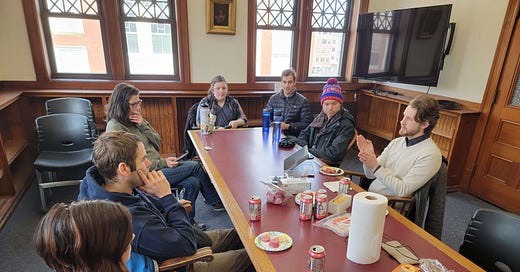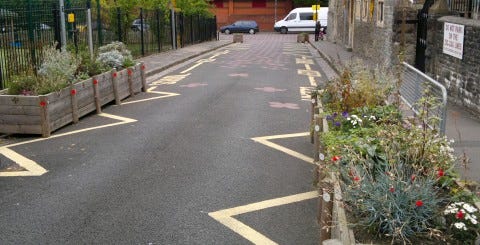Meeting #5 - Community Designed Streets
How can we get more community involvement in the design of our places?
We just wrapped up our 5th meeting this Saturday at the Dover Public Library and had a great turnout with engaged conversation. Thank you to everyone who came out to be a part of it and if you missed it, we would love to have you at our next meeting in February so be sure to check back and see when we will be meeting again.
For this meeting our topic was DIY Streets or really, community designed streets and compared to our other meetings this topic was much lighter and more focused on discussion than prepared materials.
Before we jump into the topic I want ask you a question to consider while reading.
Are you proud of the street you live on?
Current Design Methods
Right now most people living in this region have little to no power over how their streets are designed. The amount of effort it takes to make just a small change to a street is pretty high, even if everyone who lives on said street wants the new change. Do you want to add a crosswalk? Lower the speed limit? Put in speed bumps? Fix a pothole? It will likely involve a lengthy and arduous process with your city to make this change and find the money to do it if it gets done at all.
This process can make getting things done feel like climbing a mountain and discourages some people from even trying to be involved. There are many reasons why this process is like this, but I want to focus on what we lose sight of during it. Who is a street supposed to serve? The residents and businesses that are along it.
DIY Streets
Taking the Strong Towns perspective that streets are platforms for wealth creation in a community and valuing them as places to be instead of routes to take is part of the process of reclaiming the lost connection of a community to its street. In the UK there is a charity called Sustrans that came up with a concept called DIY Streets and I want to go through their approach to see what inspiration it can give us for the seacoast region.
DIY Streets is a process that brings a community-focused approach to designing a street and helping to define the context that should guide the design. With this approach, residents of a street are considered the primary stakeholders of that street and are recognized as the people who will feel the effects of the design most directly. It then gives an opportunity for the residents to have direct influence and create a great space that they are proud to share and create stronger community.
The steps to the process are:
Community Involvement - Make sure the residents of the street feel they have a say so in how their street operates and is managed. The goal here is to make sure that the people who live on a street are served by the street.
Cost-Effective Solutions - Instead of large overhauls to a street, implementing small design changes can make big differences in the feel of a place. Coming up with low-cost solutions here is part of the challenge. To help guide us in how much investment should be considered, the budget for such designs should be evaluated alongside the property taxes and existing wealth on the street to help ensure it stays relatively affordable.
DIY Design - Let residents and relevant community leaders participate in coming up with solutions for the street. They give several key ideas for this part of the process and here are some that stick out to me:
Reclaim the space: Take space that is underused or is single-use space and broaden it for multiple uses, think about places that people will walk, bike, and gather.
Narrowing the road: This encourages slower vehicle speeds so that vehicles are traveling at a compatible speed with other forms of transportation.
Gateways: Permanent features at the entrance of a street that signal to drivers that they are entering a different type of space and it is an opportunity for residents to incorporate artwork.
Artworks: Speaking of artwork, invite the residents of the street to decorate it in various ways and make it uniquely theirs.
To understand the impact that this process can have you should evaluate how residents feel about their street before and after. You can do this with a survey or by doing some measurements of things like the number and speed of vehicles in the area or the number of people walking and biking.
Are you proud of the street that you live on? What would make you more proud of your street?
Wrapping Up
Thank you for reading and following our conversation in the seacoast region. I will send out another post in a few weeks with details about our February meeting and the topic we will be discussing! For anyone that is interested, here is the PDF document for DIY Streets. Hope y’all have a great week!






